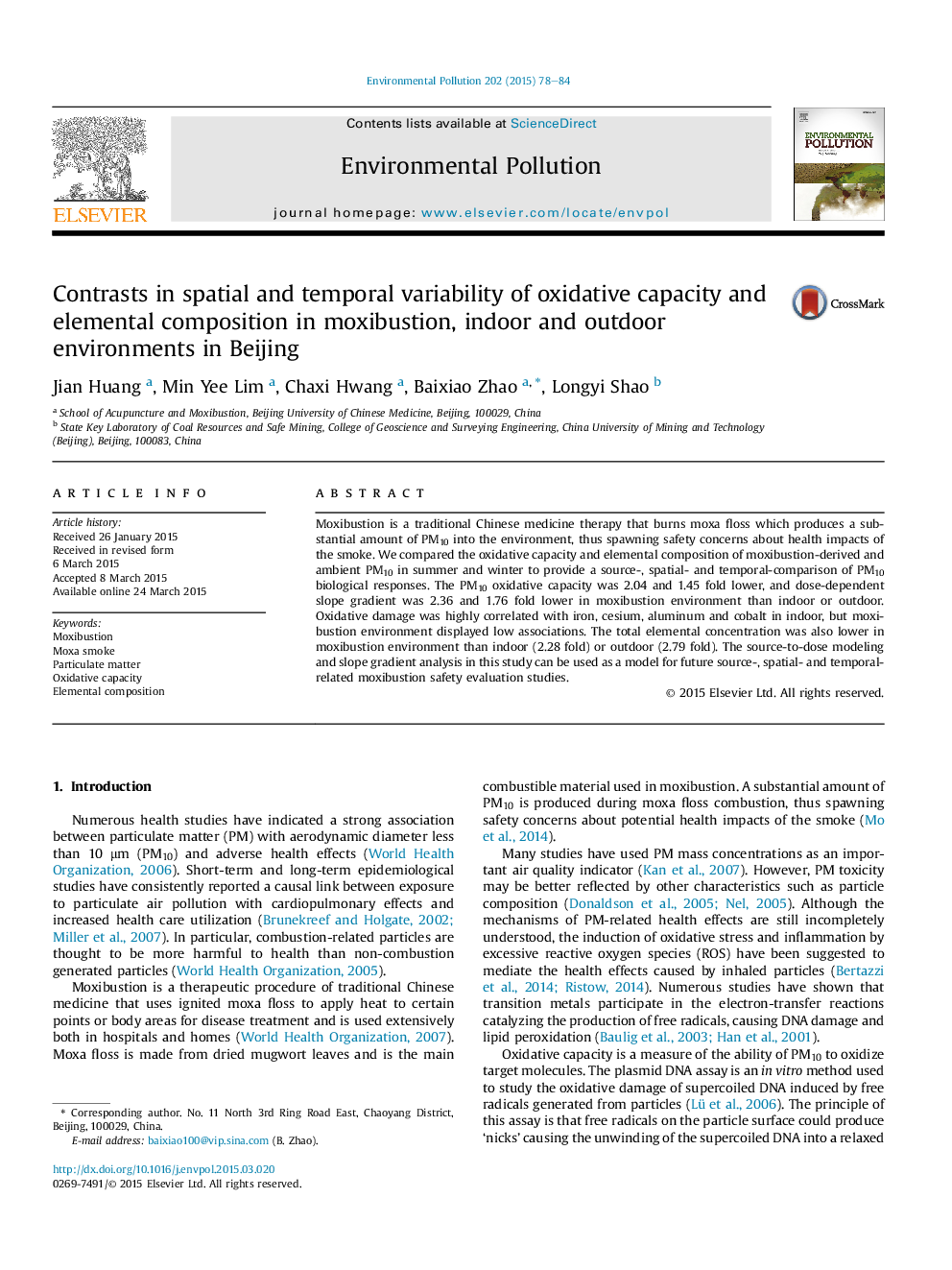| Article ID | Journal | Published Year | Pages | File Type |
|---|---|---|---|---|
| 6316492 | Environmental Pollution | 2015 | 7 Pages |
Abstract
Moxibustion is a traditional Chinese medicine therapy that burns moxa floss which produces a substantial amount of PM10 into the environment, thus spawning safety concerns about health impacts of the smoke. We compared the oxidative capacity and elemental composition of moxibustion-derived and ambient PM10 in summer and winter to provide a source-, spatial- and temporal-comparison of PM10 biological responses. The PM10 oxidative capacity was 2.04 and 1.45 fold lower, and dose-dependent slope gradient was 2.36 and 1.76 fold lower in moxibustion environment than indoor or outdoor. Oxidative damage was highly correlated with iron, cesium, aluminum and cobalt in indoor, but moxibustion environment displayed low associations. The total elemental concentration was also lower in moxibustion environment than indoor (2.28 fold) or outdoor (2.79 fold). The source-to-dose modeling and slope gradient analysis in this study can be used as a model for future source-, spatial- and temporal-related moxibustion safety evaluation studies.
Related Topics
Life Sciences
Environmental Science
Environmental Chemistry
Authors
Jian Huang, Min Yee Lim, Chaxi Hwang, Baixiao Zhao, Longyi Shao,
